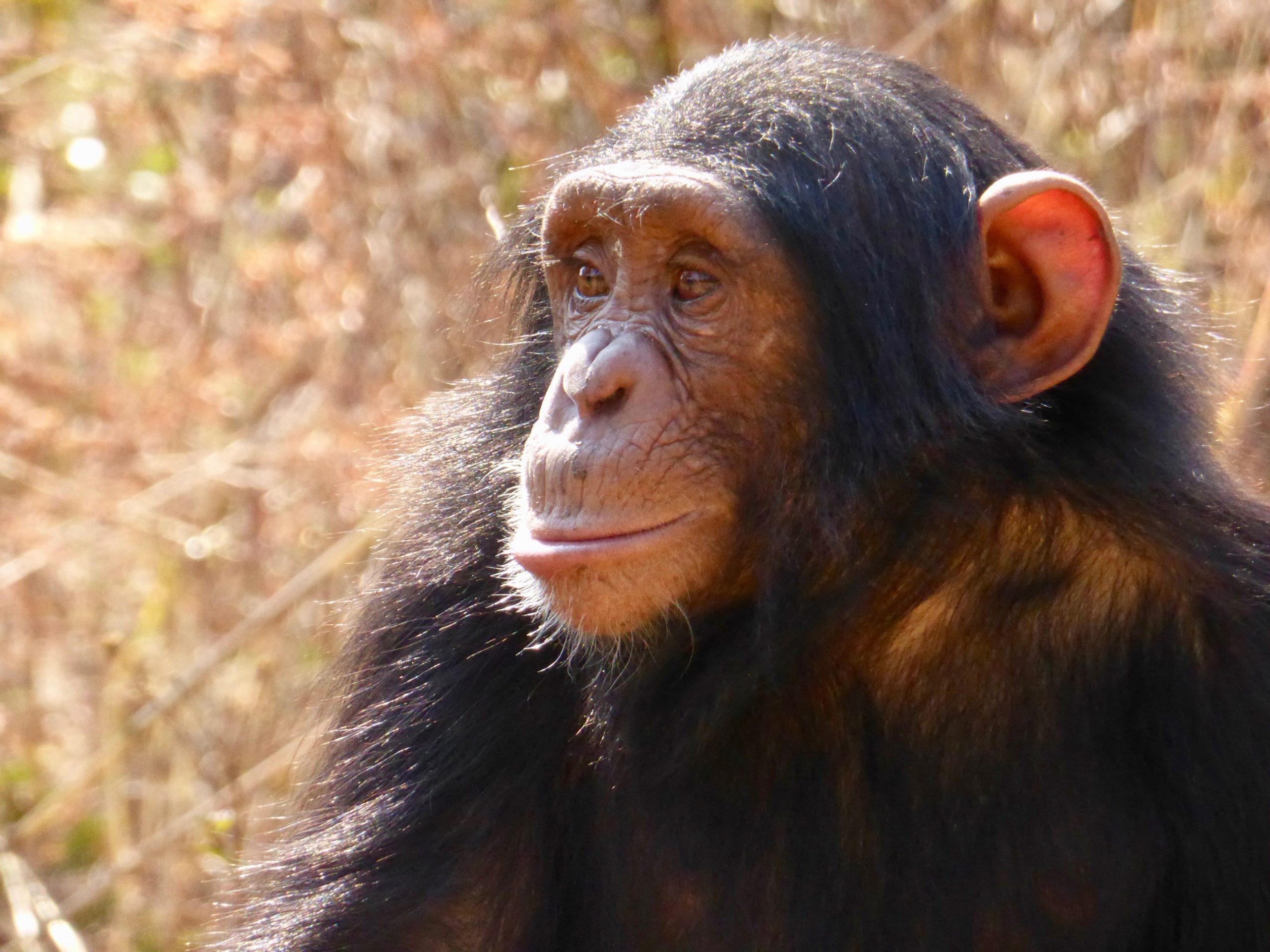Dawn of Cumulative Culture in the Apes?
Elisa Bandini gives an overview of Davis et al., 2016, “Foundations of Cumulative Culture in Apes: Improved foraging efficiency through relinquishing and combining witnessed behaviours in chimpanzees (Pan troglodytes)”
Various species of animals have been shown to adopt social learning mechanisms (alongside other mechanisms) to acquire new information. Our closest living relatives, chimpanzees, have one of the most extensive repertoires of social and tool-use behaviours within the animal kingdom, suggesting a sophisticated and advanced ability to employ different learning mechanisms to create a unique chimpanzee culture. One important difference between human and chimpanzee culture, however, is our ability to ‘ratchet’ up behaviours and create ‘cumulative culture’. Whether chimpanzees also have cumulative culture remains an open question, one which Davis et al. (2016) addressed in their recent paper.
The authors focused on assessing whether chimpanzees were able to switch flexibly from a less efficient foraging method to a more productive alternative, which would suggest an ability to inhibit previously learnt information in favour of new, more efficient, information and serve as a prerequisite for cumulative culture. To test this, Davis et al. provided five groups of chimpanzees (N=19) with a puzzle box (‘serialbox’). The serial box allows numerous methods, which vary in efficiency, to be employed in removing a token from within (tokens can then be exchanged for food).

In the first experiment, tokens could be accessed by following an inefficient method (for which all individuals received training) or a more efficient method. After an extended period of inefficient removals, three of the groups (‘social information’ groups) were exposed to several demonstrations from a high-ranking female trained in the more efficient method. The other two groups (‘non-seeded’ groups) did not receive any demonstrations in the efficient method and the control group (‘naive’ group) had access to the serialbox but were never provided with any training in either method.
Across the testing period, nine out of the 11 individuals in the ‘social information’ group and all individuals in the ‘non-seeded’ group continued to use the less efficient method. Interestingly, one individual in the naive group spontaneously invented the more efficient technique, without any demonstrations. A second individual in the same group also demonstrated this behaviour shortly after the first invention. Thus, the chimpanzees showed a high level of conformity, as only two individuals switched to the more efficient method.
To further test this potential conformity, the authors increased the disparity between methods by making the inefficient method even less reliable.
Individuals were also shown human demonstrations of the more efficient method, with the naive group (who now exclusively used the efficient method) not being included. In the social information group, five individuals switched to the more efficient method, and after human demonstrations, four more switched. In the non-seeded group, one individual spontaneously invented the more efficient method without demonstrations. This experiment saw more individuals across both groups switch to a more efficient method with and without demonstrations, but some still consistently used the less efficient method.
In a final experiment, Davis et al. investigated the chimpanzees’ ability to not only change between methods flexibly, but also to accumulate information across methods.
To test this, chimpanzees were now required to combine elements from the original inefficient method with elements unique to the efficient method. On the other hand, individuals could also revert back to the original inefficient method to remove the tokens. In the social information group, seven individuals switched to using the new compound method. In the non-seeded group, the individual who first discovered the efficient method in the second experiment built upon that knowledge to adopt the compound method. Across all groups, five individuals used the efficient method, three switched between the two methods, and two returned to using the original inefficient method.
The authors conclude that chimpanzees will preferentially remain with already established techniques if the new technique is not hugely superior in efficiency, consistent with previous reports on conservatism in chimpanzees. However, once the difference in efficiency passes a certain threshold, most (although not all) chimpanzees switch to the new, more efficient, method, even when it involved compound techniques. Davis et al. suggest that this data matches the requirements for the preconditions of cumulative culture, and that chimpanzees can and do combine known behaviours to create more efficient methods. One very interesting element of this study was the spontaneous invention of the more efficient techniques. This suggests that individual learning also plays an important role in the acquisition of new methods and behaviours.
Perhaps more studies on social learning could provide an extended baseline condition (where no social information is provided) to observe how naive individuals solve problems through individual learning, as was done in this study.
REFERENCES
Davis, S. J., Vale, G. L., Schapiro, S. J., Lambeth, S. P., & Whiten, A. (2016). Foundations of cumulative culture in apes: improved foraging efficiency through relinquishing and combining witnessed behaviours in chimpanzees (Pan troglodytes). Scientific Reports, 6, 35953.
About the author
Elisa Bandini is a postdoctoral researcher at The University of Tübingen working on the cognitive mechanisms behind primate tool manufacture and use. Elisa combines her background in archaeology with current work in primatology and cultural evolution to examine the evolution of early hominin and other primate cognition and culture.
